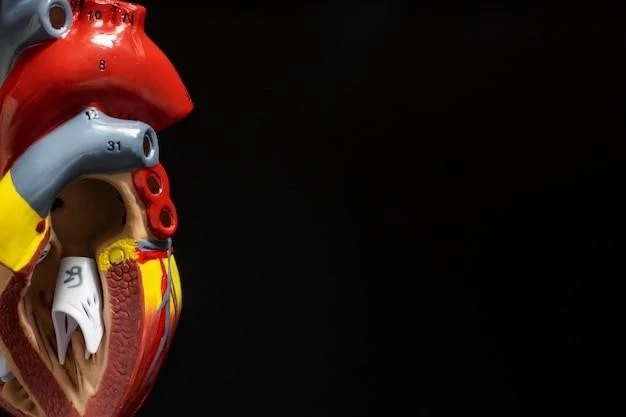Overview of Short Stature Valvular Heart Disease
Leg swelling.
Short stature-valvular heart disease is characterized by severe short stature with disproportionately short legs, small hands, clinodactyly, valvular heart disease, and dysmorphism.
It has been described in a mother and two daughters and is probably transmitted as an autosomal dominant trait.
Definition and Characteristics
Short stature-valvular heart disease is characterized by severe short stature with disproportionately short legs, small hands, clinodactyly, valvular heart disease, and dysmorphism. The syndrome is likely inherited as an autosomal dominant trait and has been observed in a mother and two daughters. Common symptoms include mitral valve prolapse, large face, hyperextensible joints, curved fifth finger, abnormal tooth positions, and more. Specialists have conducted research on this syndrome to enhance understanding and treatment approaches.
Symptoms and Manifestations
Symptoms of Short Stature Valvular Heart Disease may include leg swelling, mitral valve prolapse, large face, hyperextensible joints, curved fifth finger, and abnormal tooth positions.
List of Symptoms
The symptoms of Short Stature Valvular Heart Disease include leg swelling, mitral valve prolapse, mitral valve incompetence, large face, hyperextensible joints, curved fifth finger, delayed bone age, abnormal tooth positions, droopy eyelids, narrow pulmonary valve, and narrow pulmonary artery.
Genetic Aspects
Short stature-valvular heart disease is likely inherited as an autosomal dominant trait and shows characteristic facial features, heart defects, and short stature. Research has been conducted to explore the genetic components of this syndrome.
Autosomal Dominant Inheritance
Short stature-valvular heart disease is likely inherited as an autosomal dominant trait and presents characteristic facial features, heart defects, short stature, and dysmorphism. Research has been conducted to better understand the genetic basis of this syndrome, highlighting the importance of genetic counseling and further investigation.
Noonan Syndrome and its Relation
Noonan syndrome is a genetic multisystem disorder characterized by distinctive facial features, developmental delay, learning difficulties, short stature, congenital heart disease, renal anomalies, lymphatic malformations, and bleeding difficulties. It shares certain characteristics with Short Stature Valvular Heart Disease, such as short stature and heart defects.
Characteristic Features
Short stature-valvular heart disease is characterized by severe short stature with disproportionately short legs, small hands, clinodactyly, valvular heart disease, and dysmorphism. Individuals may exhibit facial features like ptosis, high-arched palate, and abnormal dentition, along with heart defects. Research and clinical studies have focused on identifying and understanding these specific characteristic features of the syndrome for improved diagnosis and management.

Association with Valvular Heart Disease
Short stature-valvular heart disease presents a unique combination of severe short stature, facial dysmorphism, and valvular heart defects, highlighting a complex relationship between stature and heart health.
Impact on Heart Valves
Short stature-valvular heart disease presents a unique challenge due to its impact on heart valves, particularly causing issues such as mitral valve prolapse, mitral valve incompetence, pulmonary valve stenosis, and narrow pulmonary artery. These manifestations underline the crucial connection between the physical stature of individuals and the functioning of their heart valves, highlighting the complexities that healthcare providers must navigate in diagnosis and treatment.
Healthcare providers specializing in Short Stature Valvular Heart Disease have conducted research, received grants, and engaged in clinical trials, enhancing understanding and treatment options for this condition.

Diagnosis and Specialist Involvement
Healthcare providers specializing in Short Stature Valvular Heart Disease have conducted research, received grants, run clinical trials, and actively participated in various organizations focusing on this condition. Their expertise enhances the diagnosis and treatment of affected individuals.
Treatment and Management Strategies
Healthcare providers specializing in Short Stature Valvular Heart Disease have conducted research, received grants, and run clinical trials to enhance diagnostic and treatment strategies for affected individuals.
Heart Valve Surgery
Heart valve surgery is a key treatment strategy for individuals with Short Stature Valvular Heart Disease, aiming to repair or replace malfunctioning heart valves to prevent life-threatening conditions. It is a crucial intervention that healthcare providers utilize to manage the complexities associated with valvular heart defects in affected individuals.
Short stature individuals with valvular heart disease face cardiovascular risks, including mitral valve incompetence and narrowing of the pulmonary valve, leading to additional complications requiring specialized management.
Risk Factors and Complications
Individuals with short stature valvular heart disease face cardiovascular risks like mitral valve incompetence and narrowing of the pulmonary valve, leading to complications requiring specialized management.
Individuals with Short Stature Valvular Heart Disease should avoid consuming alcoholic beverages and limit soluble fats to manage symptoms effectively.
Lifestyle Recommendations
Individuals with Short Stature Valvular Heart Disease should adhere to dietary restrictions like avoiding alcohol and limiting soluble fats, aiming to effectively manage symptoms and promote overall heart health.
Impact of Short Stature on Heart Health
Individuals with Short Stature Valvular Heart Disease may face an increased risk of cardiovascular complications due to their unique physical attributes, such as short stature and specific heart defects.
Relationship Between Short Stature and Cardiovascular Diseases
Studies have shown that short adults with Short Stature Valvular Heart Disease may have a higher predisposition to cardiovascular heart disease, emphasizing the importance of ongoing monitoring and specialized care to manage associated risks effectively.
Research Findings and Meta-Analysis
A recent meta-analysis uncovered that short adults with Short Stature Valvular Heart Disease have a 1.5 times higher risk of cardiovascular disease, underscoring the importance of ongoing monitoring.
Study on Short Stature and Cardiovascular Risk
A recent meta-analysis has revealed that individuals with Short Stature Valvular Heart Disease have a higher predisposition to cardiovascular disease, emphasizing the importance of ongoing monitoring and specialized care for effective management of associated risks.
Patient Care and Long-Term Outlook
The care and management of individuals with Short Stature Valvular Heart Disease involve ongoing monitoring, specialized care, and tailored treatment approaches to address specific cardiovascular risks associated with this condition.
Follow-up Recommendations
After initial diagnosis, individuals with Short Stature Valvular Heart Disease should receive regular follow-up appointments with healthcare providers specialized in this condition to monitor disease progression, manage symptoms, and adjust treatment plans as needed for optimal long-term outcomes.
Future Directions in Treatment and Prevention
Healthcare professionals are continually working towards advancing treatment strategies for Short Stature Valvular Heart Disease through ongoing research, including clinical trials, grants, and collaboration with specialized organizations. The focus is on enhancing diagnostic methods, developing personalized therapies, and implementing preventive measures to improve the long-term outcomes of individuals affected by this condition.
